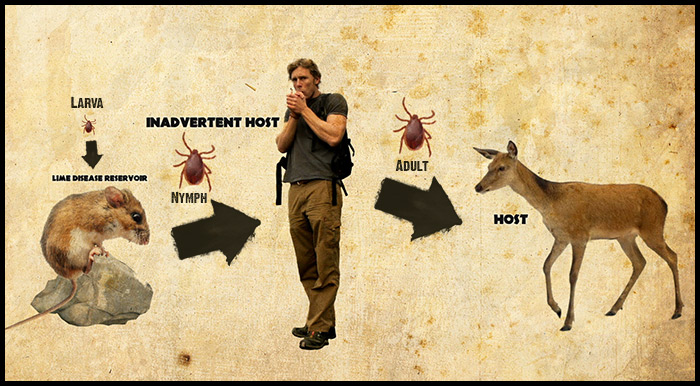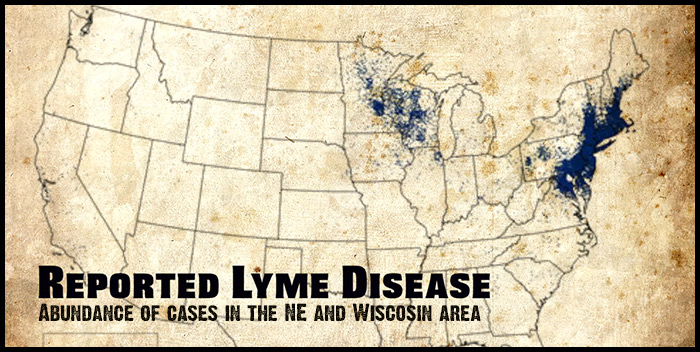Lyme Disease - The Ecology of Lyme Disease
What is Lyme disease
Lyme disease is an infectious disease casused by a species of bacteria in the genus Borrelia. The main species is Borrelia bourgdorferi, although there are a couple of other species emerging in other parts of the world. The parasite affects the joints, heart and central nervous system. Fortunately, a dose of antibiotics can cure the problem. The parasite is passed by ticks from infected hosts to humans.
The Ecology of Lyme disese
Lyme disease as an infectious disease, highlights just how important it is to study the ecology of the environment we live in. You see, the problematic parasite needs many things to fall into place for it to encounter a human host. They need ticks, hosts and reservoirs.
A tick isn’t born with the spirochaete. It picks it up in the process of taking blood meals throughout it’s life. Brian described the ecology as looking something like this:
Where is Lyme disease found
While you can find lyme disease all across the United States, the major hotspots, as indicated by this US incident map from 2010, are the northeast and the Wisconsin and Minnesota areas. If you have lyme symptoms in some of the other areas, it is likely you may have another tick carried pathogen. Ultimately they are all treated the same way though, so make sure you get your antibiotics.
Treatments for Lyme disease
Lyme disease is generally treated by antiobiotics. The most common antibiotic used is doxycycline. If you think you have lyme disease, get to your doctor right away. If left untreated, lyme diseases can cause a chronic illness. If you really want to be scare someone into going to the doctor for treatment, watch this documentary.
More of Brian Allan’s Research
- Allan, B.F., H.P. Dutra, L.S. Goessling, K. Barnett, J.M. Chase, R.J. Marquis, G.C. Pang, G.A. Storch, R.E. Thach and J.L. Orrock. 2010. Invasive honeysuckle eradication reduces tick-borne disease risk by altering host dynamics. Proceedings of the National Academy of Sciences 107(43): 18523-18527.
- Allan, B.F., L.S. Goessling, G.A. Storch and R.E. Thach. 2010. Blood meal analysis to identify reservoir hosts for Amblyomma americanum ticks. Emerging Infectious Diseases 16(3): 433-440.
- Allan, B.F., R.B. Langerhans, W.A. Ryberg, W.J. Landesman, N.W. Griffin, R.S. Katz, B.J. Oberle, M. Schutzenhofer, K.N. Smyth, A. de St. Maurice, L. Clark, K.R. Crooks, D. Hernandez, R.G. McLean, R.S. Ostfeld and J.M. Chase. 2009. Ecological correlates of risk and incidence of West Nile Virus in the United States. Oecologia 158: 699-708.
- Allan, B.F. 2009. Influence of prescribed burns on the abundance of Amblyomma americanum (Acari: Ixodidae) in the Missouri Ozarks. Journal of Medical Entomology 46(5): 1030-1036.
- Allan, B.F., F. Keesing and R.S. Ostfeld. 2003. The effect of forest fragmentation on Lyme disease risk. Conservation Biology 17: 267-272.



































































































